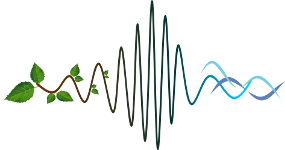Collective displays of acoustic animals are among the more spectacular phenomena in animal behavior. These displays, generally termed ‘choruses', range from crude timing of advertisement signaling during a restricted part of the day or night to precisely adjusted phase relationships between the call rhythms of neighboring individuals. The latter behavior may generate collective patterns of call synchrony or alternation that form an important aspect of the ‘acoustic environment' for a local population. In some species this acoustic environment may represent an adaptation that enhances species recognition, that maximizes the ability of a local group of males to attract females, or that helps to evade phonotactic natural enemies. However, in other cases the patterns of group calling, no matter how precisely choreographed, may simply emerge from pairwise interactions between neighbors. For example, hearing in many acoustic species is influenced by psycho-physical precedence effects wherein a call that leads another one by a brief time interval is perceived clearly while the following one is not. In sexual advertisement signaling such effects may select for pairwise interactions in which individual males modify their call timing and thereby increase their relative incidence of effective, leading calls. At the population level a specialized pattern of group calling may arise from these modifications even though this calling pattern per se is not preferred by females and does not benefit the males who produce it. Nonetheless, because the group chorus that emerges from simple interactions between neighbors forms the acoustic environment of the population, the chorus may, via feedback loops, influence evolution of behavior at the individual level. I shall explore how such feedback loops can function between different hierarchical levels of animal signaling behavior – group (population) and individual – and ultimately temper or exaggerate the evolution of mating signals and collective display.
|
|
|
|
Tuesday
17
General II
› 10:30 - 10:45 (15min) › Grande Galerie Evolution Conference Hall
Animal choruses : Ecological acoustics, emergent properties, and feedback loops
1 : Institut de recherche sur la biologie de l'insecte ; CNRS UMR 7261
(IRBI)
-
Website CNRS : UMR7261, Université François Rabelais - Tours
Av Monge ; Parc de Grandmont ; Université François Rabelais de Tours ; 37200 Tours -
France
|
| Online user: 2 | RSS Feed |

|

 PDF version
PDF version